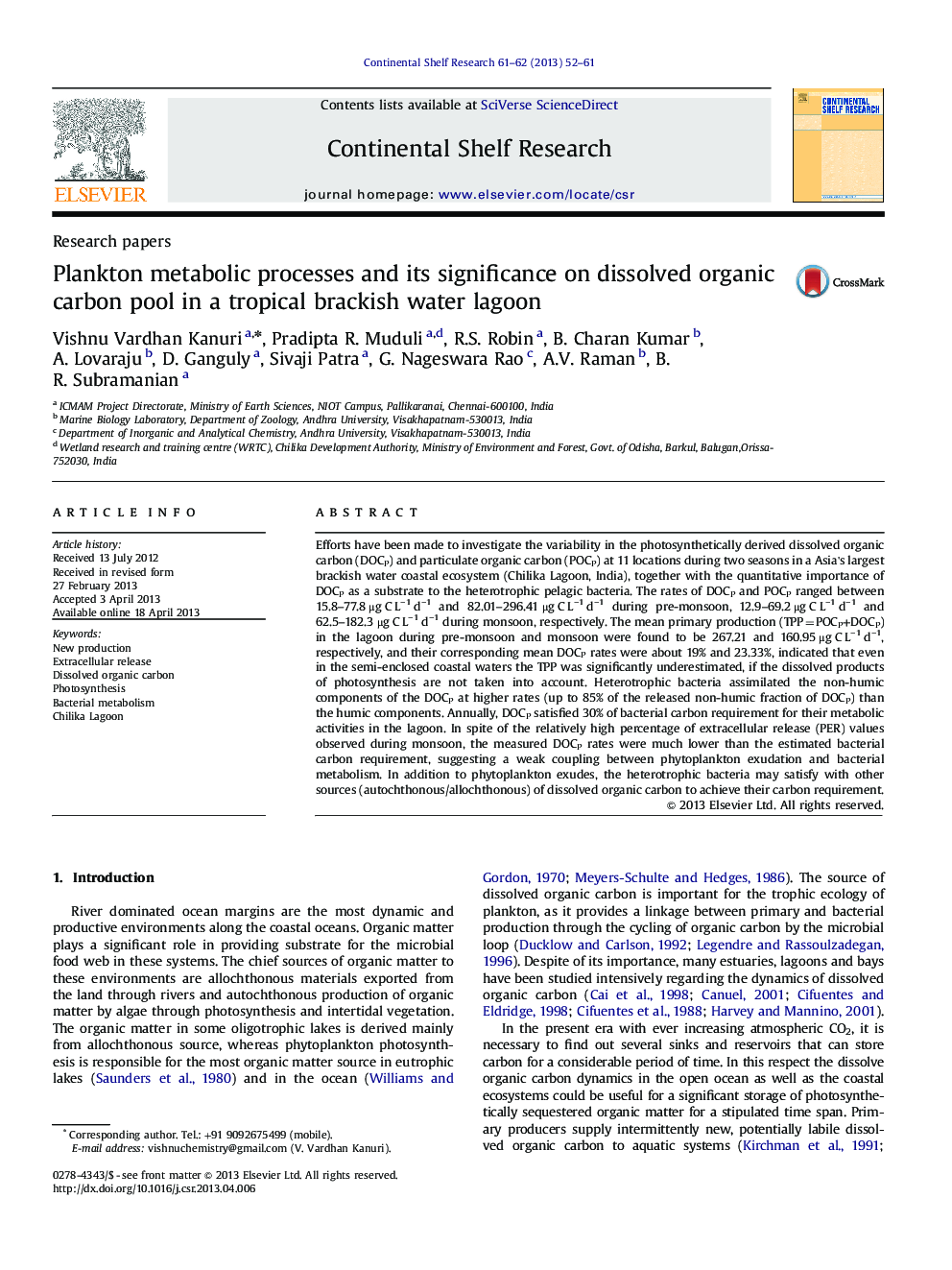| Article ID | Journal | Published Year | Pages | File Type |
|---|---|---|---|---|
| 4532144 | Continental Shelf Research | 2013 | 10 Pages |
•Photosynthetic production of Organic Carbon (DOCP+POCP) was estimated.•Temporal variability of phyto-bacterioplankton coupling strength was discussed.•Heterotrophic bacteria preferred the non-humic DOCP over its humic counterpart.•Heterotrophic bacteria noticeably depends on organic carbon other than DOCP.
Efforts have been made to investigate the variability in the photosynthetically derived dissolved organic carbon (DOCP) and particulate organic carbon (POCP) at 11 locations during two seasons in a Asia's largest brackish water coastal ecosystem (Chilika Lagoon, India), together with the quantitative importance of DOCP as a substrate to the heterotrophic pelagic bacteria. The rates of DOCP and POCP ranged between 15.8–77.8 μg C L−1 d−1 and 82.01–296.41 μg C L−1 d−1 during pre-monsoon, 12.9–69.2 μg C L−1 d−1 and 62.5–182.3 μg C L−1 d−1 during monsoon, respectively. The mean primary production (TPP=POCP+DOCP) in the lagoon during pre-monsoon and monsoon were found to be 267.21 and 160.95 μg C L−1 d−1, respectively, and their corresponding mean DOCP rates were about 19% and 23.33%, indicated that even in the semi-enclosed coastal waters the TPP was significantly underestimated, if the dissolved products of photosynthesis are not taken into account. Heterotrophic bacteria assimilated the non-humic components of the DOCP at higher rates (up to 85% of the released non-humic fraction of DOCP) than the humic components. Annually, DOCP satisfied 30% of bacterial carbon requirement for their metabolic activities in the lagoon. In spite of the relatively high percentage of extracellular release (PER) values observed during monsoon, the measured DOCP rates were much lower than the estimated bacterial carbon requirement, suggesting a weak coupling between phytoplankton exudation and bacterial metabolism. In addition to phytoplankton exudes, the heterotrophic bacteria may satisfy with other sources (autochthonous/allochthonous) of dissolved organic carbon to achieve their carbon requirement.
